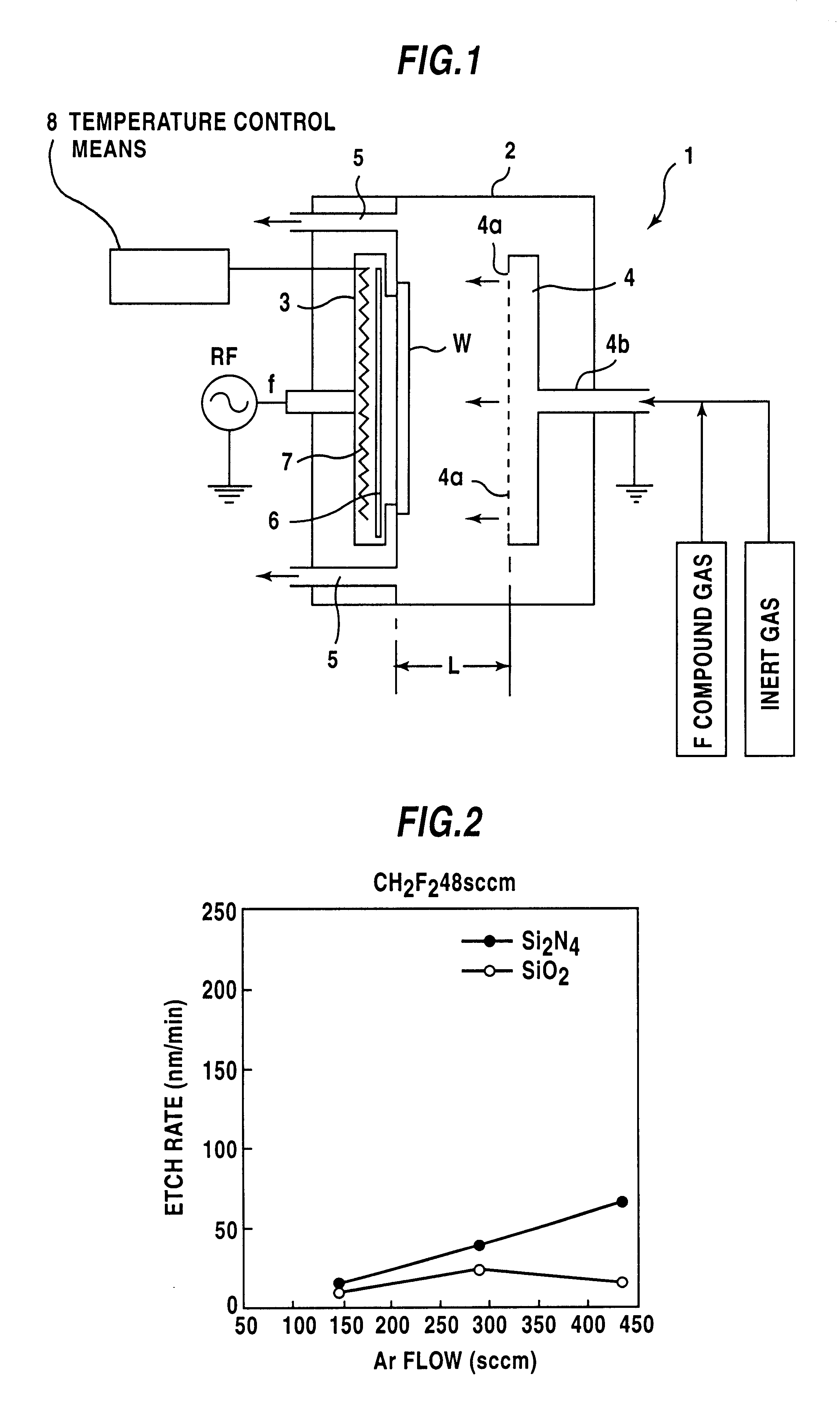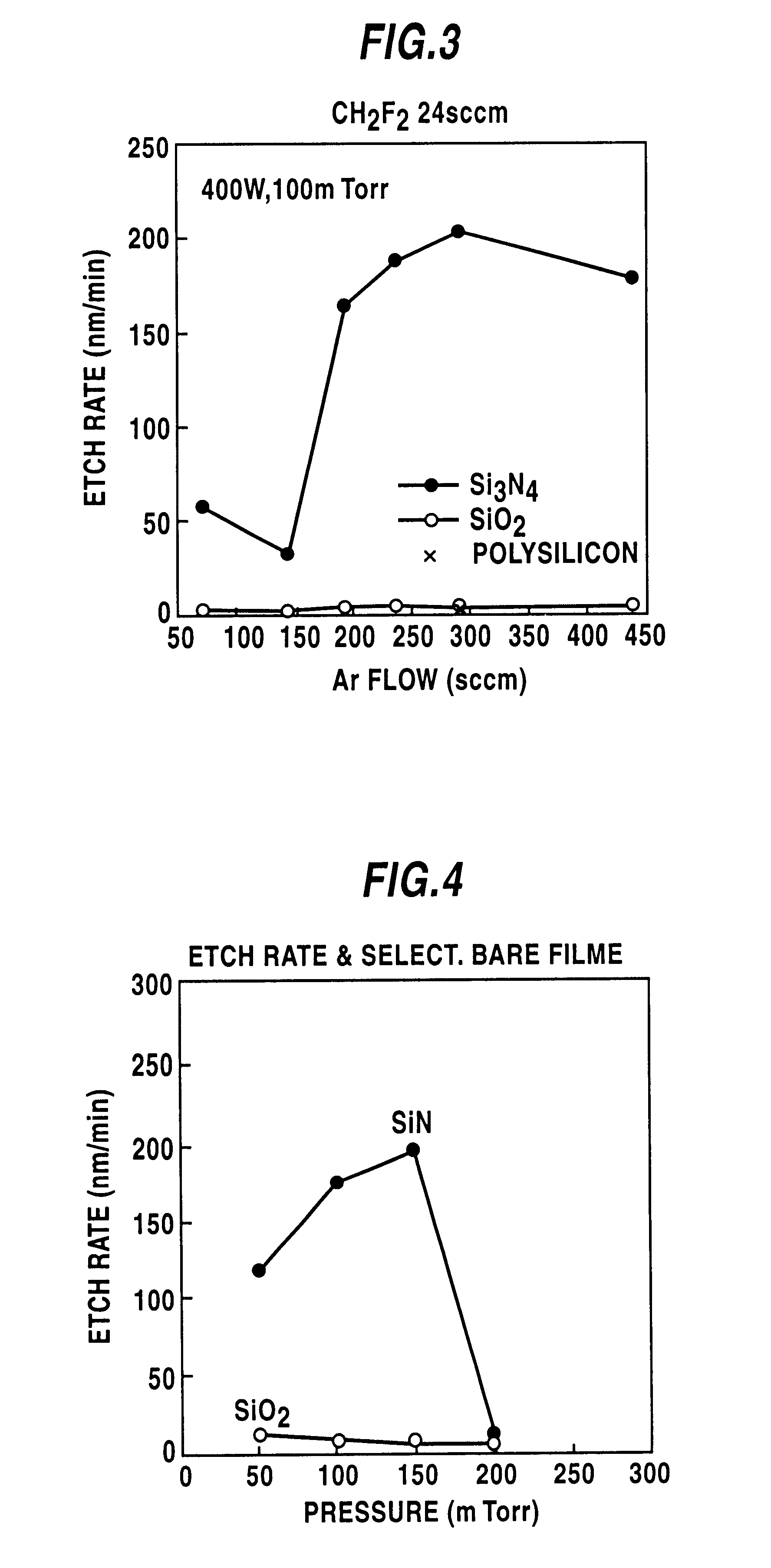Method of etching silicon nitride by a mixture of CH2 F2, CH3F or CHF3 and an inert gas
a silicon nitride and inert gas technology, applied in the direction of semiconductor devices, electrical equipment, basic electric elements, etc., can solve the problems of etching selectivity of silicon nitride to silicon oxide and anisotropy trade-offs with each other, and increase the damage of silicon substrates
- Summary
- Abstract
- Description
- Claims
- Application Information
AI Technical Summary
Problems solved by technology
Method used
Image
Examples
second example
FIGS. 15A to 15K are sectional views showing steps of manufacturing a DRAM cell to which the above etching technique is applied.
First of all, steps of forming a configuration shown in FIG. 15A will be explained.
The field oxide film 22 is formed on the silicon substrate 21 by the selective oxidation method. The field oxide film 22 is formed to surround a device forming region A. Formation of this field oxide film 22 may be carried out according to common conditions, otherwise it may be carried out along the steps being explained in the first example. An about 60 .ANG. thick gate insulating layer 23 made of SiO.sub.2 is formed in the device forming region A.
Then, a polysilicon layer 24, a silicide layer 25, and a first cap layer 26 made of SiO.sub.2 are formed in sequence on the overall silicon substrate 21 to have thicknesses of 500 .ANG., 700 .ANG., and 800 .ANG. respectively. The silicide film 25 is made of tungsten silicide, titanium silicide, etc. and is formed by the salicide te...
third example
Next, a step of selectively etching the silicon nitride in forming the contact holes by the BLC technique will be explained.
First, steps of forming up to a structure shown in FIG. 16A will be explained.
A groove 52 is formed in the device isolation region of the silicon substrate 51, and then a buried insulating film 53 made of silicon oxide is filled into the groove 52. As a method of filling the buried insulating film 53 into the groove 52, such a method can be employed, for example, that the buried insulating film 53 is formed by CVD in the groove 52 and on the silicon substrate 51 and then the buried insulating film 53 on a surface of the silicon substrate 51 is removed by polishing.
A gate insulating film 54, a gate electrode 55, and a gate covering insulating film 56 are then formed in an active region. Then, low-impurity concentration regions 57s, 57d are formed by ion-implanting the impurity into the silicon substrate 51 on both sides of the gate electrode 55 at a low dosage b...
PUM
 Login to View More
Login to View More Abstract
Description
Claims
Application Information
 Login to View More
Login to View More - R&D
- Intellectual Property
- Life Sciences
- Materials
- Tech Scout
- Unparalleled Data Quality
- Higher Quality Content
- 60% Fewer Hallucinations
Browse by: Latest US Patents, China's latest patents, Technical Efficacy Thesaurus, Application Domain, Technology Topic, Popular Technical Reports.
© 2025 PatSnap. All rights reserved.Legal|Privacy policy|Modern Slavery Act Transparency Statement|Sitemap|About US| Contact US: help@patsnap.com



